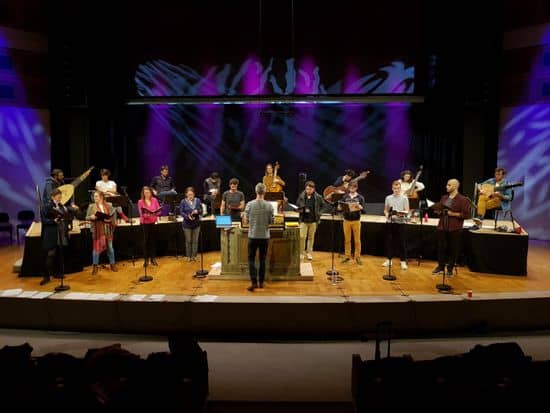Pleasures of the Louvre
Before Versailles, the epicenter of power in the Kingdom of France was the Louvre, a veritable theater of ceremonial where music had to shine through its magnificence. Although less vast, convenient and comfortable than other palaces such as Fontainebleau or Saint-Germain-en-Laye, the Louvre had become since the reign of Henry III the main residence of the king, who spent part of the year there, mainly the winter months. As an essential place of the monarchy and royal symbolism, it was there that the important events of the court’s life were naturally staged, and that within its walls a veritable ceremonial was developed, which was to reach its apogee under Louis XIV. In this theater of power, music, an object of entertainment as well as an instrument of magnificence, found a setting that was both public and intimate.
In this first part of the Grand siècle, when the Précieuses governed fashion and the arts, the salons were at the center of the world: people entertained, talked, exchanged ideas on the scientific subjects of the moment, recited verses composed or improvised on the spot, and confronted their points of view on the shows. And there is always music playing. This music is not only the work of duly paid histrionics: the greatest aristocrats are also devoted to it, at a time when singing and playing the lute are the signs of a perfect education and refinement. Under Louis XIII, the city and the court influenced each other, making aspirations and practices evolve. If society loved to sing the arias from the ballets danced by or in front of the king and queen, the court in turn gave in to this gallant culture that flooded the Parisian salons.
The first gentleman of France, Louis XIII himself was a dancer as well as a musician and even a composer. Music was certainly one of his main interests (perhaps beyond politics itself). Thus, the French court and the Chamber of Louis XIII are the mirror of all this artistic life of the salons: around the musician-king, the musicians of the Chamber compose a fine team of individual talents who shine as much by their interpretations as by their compositions. If posterity has remembered the names of Chambonnières, Antoine Boësset, Etienne Moulinié, or Louis Couperin, it is fascinating to think today that all these leading artists were able to work together on a daily basis!
Night, love, mystery, metamorphosis, mythology are all delicious ingredients of the poetics of the air de cour. Among the great masters of music at the French court in the 17th century, Antoine Boësset is probably the musical personality who aroused the most enthusiasm and passion: his arias were printed in large numbers, adapted (voice and lute or in polyphony), and some of them appeared in the great royal ballets from the end of the 1610s until well after his death in 1643.
Let us be guided by the echoes of these “pleasures” populated by sometimes strange and whimsical divinities, allegorical characters or from the world of gallantry, which were the delights of Louis XIII, the queens Marie de Medici and Anne of Austria and the court, in what was, before Versailles, the emblematic residence of the kings of France.
